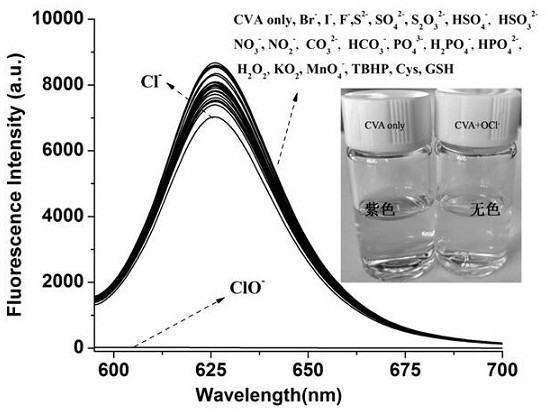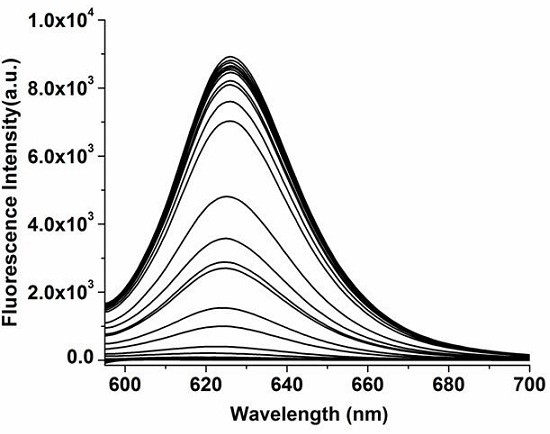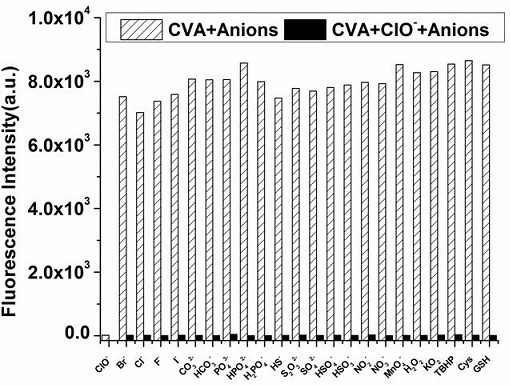A method for detecting hypochlorite by near-infrared
A near-infrared detection and hypochlorite technology, which is used in measurement devices, material excitation analysis, fluorescence/phosphorescence, etc., can solve the problems of fluorescence signal interference, strong visible light scattering, etc., and achieve broad application prospects, low cost, and high sensitivity. and selective effects
- Summary
- Abstract
- Description
- Claims
- Application Information
AI Technical Summary
Problems solved by technology
Method used
Image
Examples
Embodiment 1
[0023] Prepare a PBS buffer solution with a pH of 7.4 and a concentration of 10 mM, and prepare a cresyl violet (CVA) ethanol solution with a concentration of 1 mM with ethanol. The effect of the probe cresyl violet (CVA) on hypochlorite (ClO - ) selectivity. Such as figure 1 As shown, under the excitation condition at 580 nm, the single probe cresyl violet (CVA) (10 µM) has a strong fluorescence emission intensity at 627 nm in PBS buffer solution, and when hypochlorite (ClO - ) (10 eq.), the fluorescence emission intensity at 627 nm decreased significantly, but when other substances (100 µM) were added, the fluorescence emission intensity of the solution system did not change significantly compared with that of the individual probe system. At the same time, it was observed that the individual probe cresyl violet (CVA) was purple in PBS buffer solution, and the addition of hypochlorite changed its color to colorless (attached figure 1 Inset), indicating that the selection o...
PUM
 Login to View More
Login to View More Abstract
Description
Claims
Application Information
 Login to View More
Login to View More - R&D
- Intellectual Property
- Life Sciences
- Materials
- Tech Scout
- Unparalleled Data Quality
- Higher Quality Content
- 60% Fewer Hallucinations
Browse by: Latest US Patents, China's latest patents, Technical Efficacy Thesaurus, Application Domain, Technology Topic, Popular Technical Reports.
© 2025 PatSnap. All rights reserved.Legal|Privacy policy|Modern Slavery Act Transparency Statement|Sitemap|About US| Contact US: help@patsnap.com



